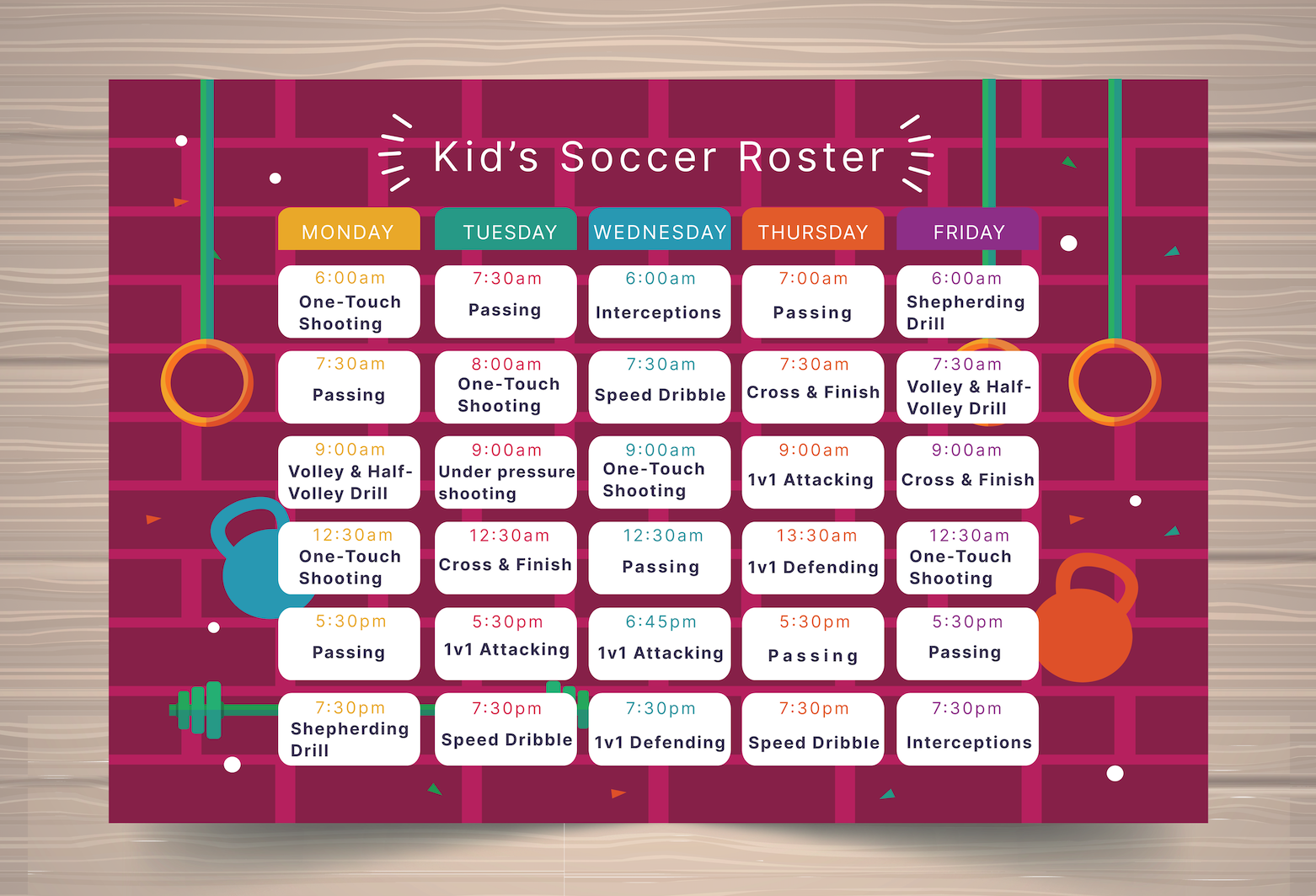
How to Start a Youth Soccer Academy: A Complete Business Guide
Worldwide soccer market revenue is projected at US $59.1 billion in 2025, expected to grow to US $66.7 billion by 2029. With millions of kids, teens, and adults joining academies every year, there’s never been a better time to start a soccer academy.
But launching a successful soccer training business isn’t just about booking a field and running a few drills. It takes a clear soccer academy business plan, the right team, smart tools, and a strong understanding of your local community. If you're planning to open a youth soccer program, launch a seasonal camp, or build a full-scale soccer coaching center, this guide will walk you through every step. We’ll cover how to register your academy, choose your business model, hire coaches, and use technology to ease your operations—so you can focus on what matters most: player development.
In this complete guide, we'll walk you through the 8 essential steps to launch a youth soccer program - from legal setup and curriculum design to marketing and scheduling. This blog is for both individuals who are new to sports entrepreneurship and those looking to scale an existing youth soccer academy.
Let’s kick off your journey to building the best soccer coaching business and a winning brand.

Here’s How to Start a Soccer Academy in 8 Simple Steps
From defining your academy's purpose to managing training schedules and payments, these steps will help you build a well-structured, professional coaching business from the ground up.
Step 1: Define Your Soccer Academy's Vision & Understand Your Local Market
Before you create a website or rent a field, take time to clarify what kind of soccer academy you want to build - and who it is for.
Start by identifying your target audience. Are you planning to train kids just starting out, serious teenage athletes aiming for college or pro trials, or casual players looking to stay fit and improve skills? Your core audience will shape everything: the coaching style, pricing model, facility needs, and even how you market the academy.

You don’t need a massive market research project - but understanding your local competitors and community needs will help you position your business clearly from the start.
This clarity will also help later when creating your soccer academy business plan and marketing materials. When parents or players visit your site, they should immediately understand who you serve and what makes your training different.
Step 2: Choose a Business Model That Fits Your Academy’s Goals
Your business model is the engine behind your soccer training business. It defines how you’ll generate revenue, deliver programs, and grow sustainably over time. Before jumping into operations, get clear on what your offerings will look like and how they’ll be structured.

Define Your Program Formats
Will your academy offer:
- Year-round training?
- Seasonal camps during school breaks?
- Evening clinics and weekend drop-ins?
- Competitive teams or recreational programs?
Some soccer coaching businesses specialize in one format, while others mix offerings to appeal to different age groups or schedules. The key is to start with 1–2 formats you can manage well and expand once you’ve built a stable foundation.
Pick a Revenue Strategy That Matches Your Capacity
There’s no one-size-fits-all approach. Here are a few proven soccer academy business model examples:
- Membership plans with recurring monthly payments
- Session packages (e.g. 10 sessions with an expiry)
- Pay-as-you-go drop-in rates for casual players
- Team training packages sold to local schools or clubs
Offering flexible payment options helps attract different types of customers, especially if you're launching in a diverse or price-sensitive market.
Position Yourself in the Market
Once you’ve defined your offerings and pricing, look at how you’ll stand out. Ask:
- What makes your coaching unique?
- Do you offer a stronger focus on technical training drills?
- Are your coaches certified or ex-pros?
- Do you offer individual player development plans?
In a crowded youth sports market, the way you position your academy will determine how parents and players perceive your value. Once you’ve defined your offerings and how you’ll stand out, it’s time to figure out where you’ll deliver those programs—your training facility.
Step 3: Plan Your Facility and Infrastructure
Your training space will have a major impact on both the quality of coaching and the customer experience. Whether you’re just starting with a rented field or planning to build your soccer coaching center, the right facility setup will help you deliver consistent, high-quality sessions.

Indoor or Outdoor?
Start by choosing the type of surface that fits your program and climate:
- Outdoor fields are more affordable and great for competitive matches, but the weather can be a limitation.
- Indoor turf facilities are ideal for year-round training, technical drills, and controlled small-group sessions.
Think about how many players you’ll train at once, the space you’ll need, and whether you’ll run drills, scrimmages, or team play. For most new academies, renting a local field or school ground is a practical first step.
Renting vs. Owning
- Renting gives you flexibility and lower upfront costs.
- Owning or leasing long-term gives you more control over schedules and branding but requires capital investment.
You’ll also need to consider zoning laws, permits, and insurance coverage, which we’ll cover more in the legal setup step.
Don’t Forget the Essentials
Make sure your facility checks the boxes for:
- Parking and drop-off access
- Good lighting for evening sessions
- Restrooms and water stations
- Safety measures like netting, fencing, and emergency kits
Step 4: Get Your Legal & Administrative Setup in Order
Before launching your soccer academy, it’s critical to make sure everything is legally sound. A strong administrative foundation protects your business, builds trust with parents, and ensures long-term scalability.
Register Your Business
Choose a business structure that fits your goals—most soccer coaching businesses register as:
- LLC (Limited Liability Company) for liability protection
- Sole proprietorship for simplicity
- Non-profit if focused on community access or grants
Check with your local small business authority or use platforms like SBA.gov to guide your paperwork.
Local Permits & Zoning
If you’re running sessions in public spaces, private fields, or indoor facilities, make sure you’ve secured the necessary zoning approvals and permits. Some cities require special licensing to operate youth development programs on certain properties.
Insurance & Waivers

Accidents happen - even with the best coaches and safest environments. You’ll want:
- General liability insurance
- Accident/participant injury coverage
- Property insurance (if you own equipment or lease a facility)
- Waiver forms signed by all participants (or their parents)
This is not just a legal formality—it shows professionalism and helps build confidence with families.
Background Checks for Staff
Parents want to know their kids are in safe hands. Run background checks on all coaching and administrative staff. It’s often required by law if you work with minors, and it positions your academy as trustworthy and well-managed.
Bonus: Get Your Finances in Order
Use tools like business budget templates or financial planning calculators to estimate your monthly costs. Don’t forget recurring expenses like:
- Facility rental
- Coaching staff pay
- Insurance premiums
- Marketing and software subscriptions
Step 5: Create a Curriculum and Training Schedule
Your training curriculum is the heartbeat of your soccer academy. It’s what turns casual interest into real progress—and keeps players (and parents) coming back.
Whether you're coaching beginners or advanced athletes, a clear, age-appropriate curriculum sets expectations, builds trust, and ensures steady player growth.
Structure Your Programs by Age & Skill Level
Break your training groups into brackets—for example:
- Ages 5–8: Focus on fun, motor skills, and basic ball control
- Ages 9–12: Add passing, positioning, and awareness
- Ages 13+: Tactical thinking, match fitness, mental strength
This gives players a sense of progression and helps you deliver the right level of technical training drills at every stage.

Build Sessions Around Key Pillars
Every great training program balances the four main pillars of soccer development:
- Technical – dribbling, passing, shooting
- Tactical – positioning, decision-making
- Physical – agility, speed, endurance
- Mental – confidence, teamwork, focus
Your curriculum should map out how these evolve weekly or monthly across each age group. Include session frequency, length, and rest periods. For example: 3 sessions per week, 90 minutes each, with weekend recovery or matches.
If you're running a soccer academy in the U.S., you can elevate your training standards by aligning with the U.S. Soccer Federation (USSF) - the official governing body recognized by FIFA. USSF leads the Player Development Initiatives (PDIs), which include age-appropriate formats, birth-year registration models, and standardized coaching pathways that support holistic player growth and long-term progression.
They also offer the U.S. Soccer Learning Center, where coaches can earn licenses from Grassroots through B level, helping your staff stay certified and compliant
Managing training schedules across multiple age groups can get complex quickly. With Omnify, you can easily set up weekly classes based on age or skill level, share training calendars with parents and coaches, automate reminders, and track attendance—all in one platform designed for growing academies.
With your training programs structured and schedules mapped out, the next step is getting players in the door - through seamless registration, payments, lead generation, and class management.
Step 6: Set Up Online Registration, Payments & Class Management
As your business grows, managing signups and payments manually will quickly become overwhelming. Parents expect smooth onboarding, flexible payment options, and clear communication from day one.
That’s why a reliable class booking system is a must - not just to stay organized, but to deliver a great customer experience in sports businesses.
Simplify Registration and Waivers
Give parents the ability to register online through a branded portal. Include:
- Player info and medical history
- Digital waiver forms
- Age group/class selection
- Confirmation emails or SMS
No more messy spreadsheets or paper signups.
Offer Flexible Payment Options
Parents may prefer different payment methods based on their needs. With the right system, you can accept:
- One-time session payments
- Monthly membership plans
- Multi-session packages with discounts
- Sibling or early bird pricing
These flexible options improve cash flow and reduce friction at checkout.
Step 7: Market Your Soccer Academy to Attract Players
Once your programs and systems are in place, it’s time to spread the word. A well-executed marketing strategy not only brings in your first batch of players—it also builds long-term visibility and credibility for your soccer academy.
The key is to combine local outreach with smart digital marketing. Here’s how:
Start with Local Partnerships
Build relationships with:
- Schools, daycare centers, and community clubs
- Local sports stores or physical therapists
- School soccer teams or PE teachers
Offer free demo sessions or affiliate discounts to introduce your brand and build trust.
Promote on Digital Channels
Parents and teens are constantly on social media—meet them there:
- Post training clips and testimonials on Instagram Reels and Facebook
- Run geo-targeted ads during school seasons or holidays
- List your academy on Google Business and local directories
- Start collecting 5-star reviews to boost SEO (For help attracting more players online, especially within your area, this guide can help you stay ahead with Local SEO in 2025 to boost your visibility)
Keep your branding clean and consistent across channels—logo, tagline, tone of voice. This makes you memorable and trustworthy.
Use Referral and Incentive Campaigns
- Offer early-bird discounts during registration periods
- Run referral programs with “1 free session” rewards
- Let satisfied parents and players spread the word
Word-of-mouth is one of the most effective soccer academy marketing strategies, especially in tight-knit communities.
Step 8: Create a Winning Player & Parent Experience

Great coaching brings people in. Great experiences make them stay—and spread the word. If you want your soccer academy to grow steadily, focusing on player Progression isn’t enough. You need to consistently deliver value, communication, and care to both players and their families.
Prioritize Communication
Clear, proactive updates build trust and prevent confusion. Use tools like email or SMS to:
- Send class schedules and last-minute updates
- Remind parents about sessions, payments, or events
- Share photos, match results, and progress reports
A platform like Omnify can automate these parent communication tools, saving you hours each week while keeping your academy connected.
Track Progress and Celebrate Growth
Parents love seeing improvement. Consider:
- Simple report cards at the end of each season
- Video highlights or skill comparisons
- Feedback sessions or digital performance reviews
Even a short “Your child’s improvement this season” email goes a long way in boosting retention and referrals.
Build a Sense of Belonging
Create a brand experience that feels professional, not just functional:
- Branded academy jerseys or training gear
- Team photoshoots, highlight reels, and tournaments
- Private WhatsApp or Facebook groups for each cohort
These small touches increase engagement and create lasting emotional connections with your academy.
Conclusion: Build and Manage Your Academy the Right Way
Starting a soccer training business is more than just organizing practices—it’s about creating structure, building trust, and delivering real development for players. With a clear vision, strong systems, and a standout experience, you can turn your passion into a thriving academy that leaves a lasting impact.
Discover Omnify's Facility Management Software, which has uplifted operations for numerous recreation and sports facility businesses. By leveraging this cutting-edge solution, you can save valuable time and effort while providing exceptional services to your members. SIGN UP FOR FREE today and propel your soccer academy towards unprecedented growth.
Create a soccer academy with a solid business plan, smooth registration, and software to manage schedules, payments, and player experience.





.jpg)



